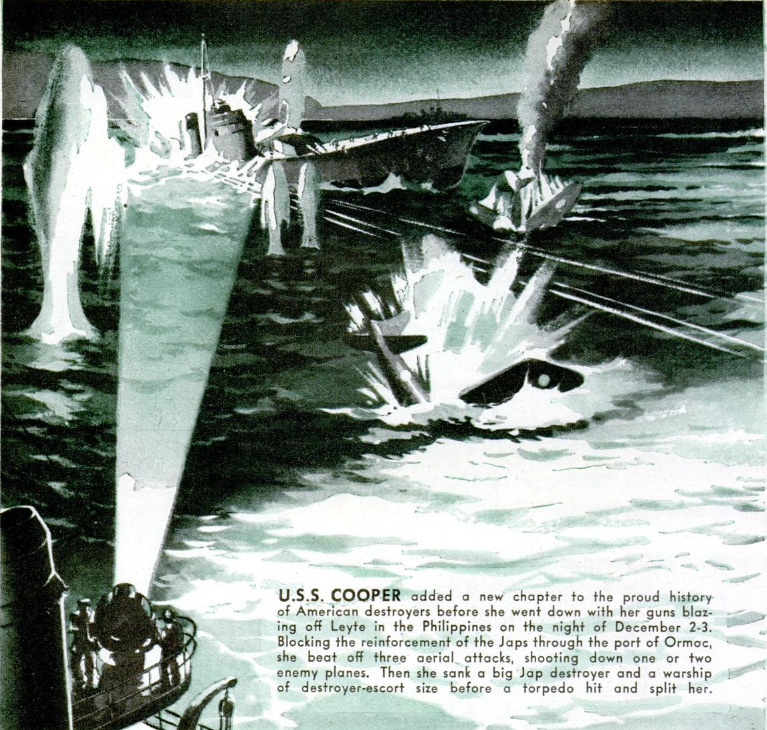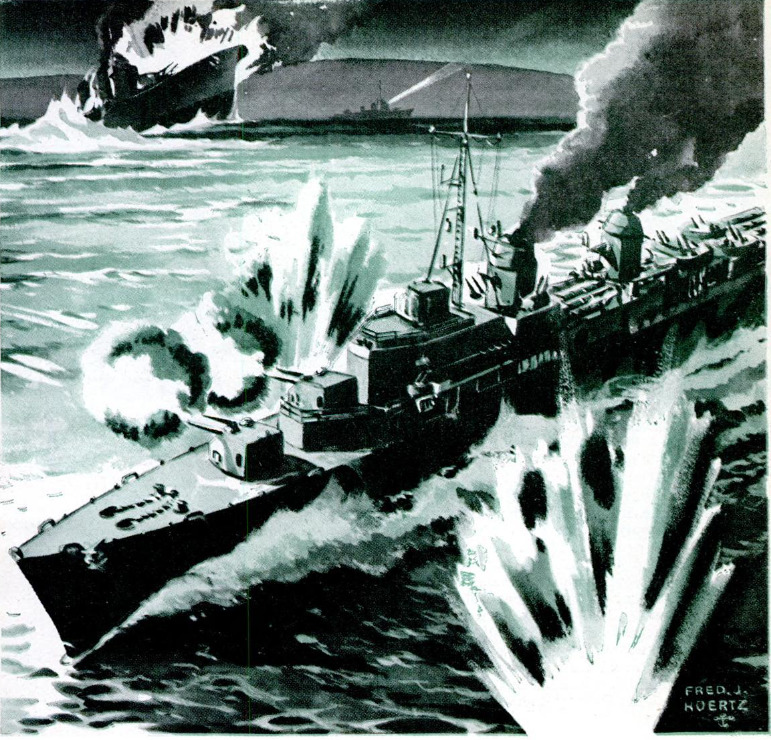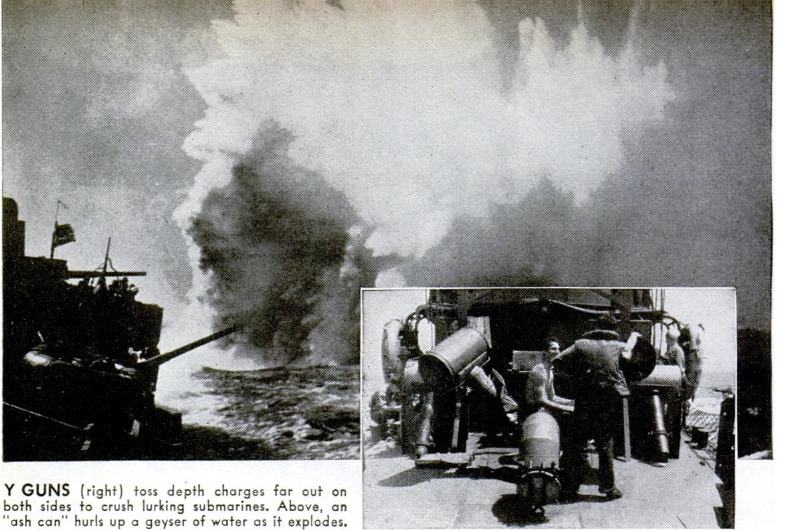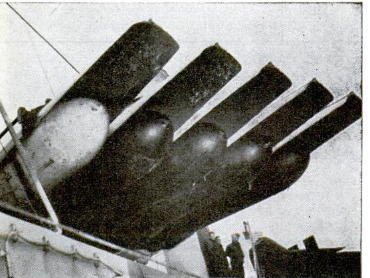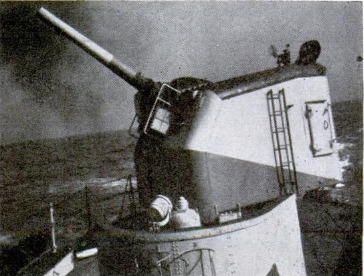-
Title (Dublin Core)
-
Tin cans dish out!
-
Article Title and/or Image Caption (Dublin Core)
-
Tin cans dish out!
-
extracted text (Extract Text)
-
SCRAPPIEST of warcraft, they stand up
to anything afloat, including battleships.
Ton for ton, they outgun all other men-of-
war. On the same basis, the propelling ma-
chinery that gives them their dashing speed
is the most powerful. High seas inundate
their decks, they roll until masts stand mid-
way between sky and water, and sandwiches
are stormy-weather fare until pots and pans
will stay put on galley stoves. They are
about the largest warships whose men all
know each other by first names. Crews
openly blast with seafaring language, but
secretly love, these sailors’ ships that lay-
men call destroyers, that the Navy Depart-
ment lists as DD's, and that will always be
known to the men aboard them as tin cans.
A destroyer of our 2,100-ton Fletcher
class, last on which details are available,
illustrates what a modern destroyer fights
with. Five double-purpose guns of five-inch
caliber shell surface craft, or may be ele-
vated to fire on planes. Antiaircraft guns of
40-mm. and 20-mm. size provide additional
firepower. Also double-purpose, the AA's
can be depressed to riddle surfaced sub-
marines. Two deck-mounted sets of tor-
pedo tubes, five in each mount, invite
healthy respect from enemy warships.
Depth charges dispose of submarines under
water. Though our latest and heaviest de-
stroyers of the 2,200-ton Allen M. Sumner
class remain pretty much under wraps, it
may be said that increased armament prin-
cipally accounts for their greater tonnage.
From its guns alone, a Sumner-class de-
stroyer throws more than a ton of steel in
only 15 seconds, as Japanese warcraft have
already learned to their dismay.
As might be suspected from its variety of
weapons, a destroyer performs countless
missions. Supporting amphibious landings,
naval opinion holds, represents the outstand-
ing innovation among destroyer uses during
‘World War II. Based on such successful
tests as the Normandy invasion, in which 30
U.S. tin cans participated, the procedure
begins with a preliminary long-range bom-
bardment by battleships and cruisers. This
reduces to rubble the massive fortifications
that only their heavy shells can penetrate.
Now comes the destroyers’ turn. Able to
maneuver in shallow and constricted waters,
they steam close to shore, to locate and put
out of action all remaining gun positions
commanding the intended beachhead. Of
course, this is simply throwing the rule book
overboard, for a square hit from a six-inch
shore battery can demolish a destroyer—
which has no armor worth mentioning—as
thoroughly as a salvo from a battleship’s
big guns. But when the fate of a great in-
vading army hangs in the balance, destroy-
ers become expendable. It cost us the de-
stroyers Meredith and Glennon to put our
troops ashore at “Utah Beach” in Norman-
dy, a price well justified by the success of
the landing and the enormous over-all sav-
ing in casualties.
No heavy warship, fleet, or convoy would
dream of leaving port in wartime without
an escort of destroyers to “screen” it from
attack, especially by enemy submarines.
Task forces of destroyers also hunt sub-
marines on their own. The team which de-
stroyed more submarines than any other in
naval history consisted of the four-stacker
destroyers Borie, Barry, and Goff, operat-
ing with the escort carrier Card.
One stormy night in the North Atlantic,
-
Contributor (Dublin Core)
-
Alden P. Armagnac (article writer)
-
Language (Dublin Core)
-
eng
-
Date Issued (Dublin Core)
-
1945-07
-
pages (Bibliographic Ontology)
-
128-130
-
Rights (Dublin Core)
-
Public domain
-
Archived by (Dublin Core)
-
Sami Akbiyik
-
Marco Bortolami (editor)
 Popular Science Monthly, v. 147, n. 1, 1945
Popular Science Monthly, v. 147, n. 1, 1945

